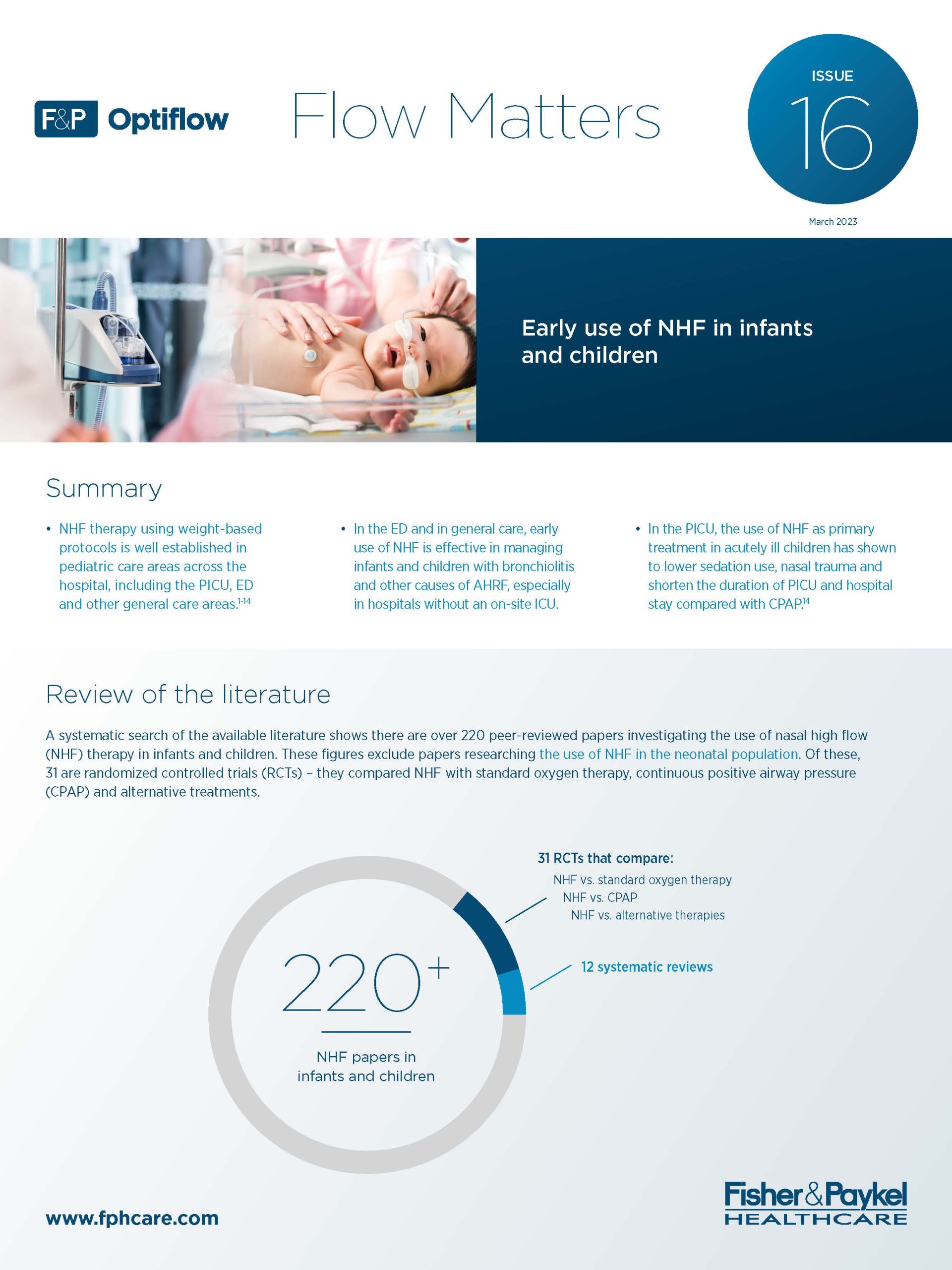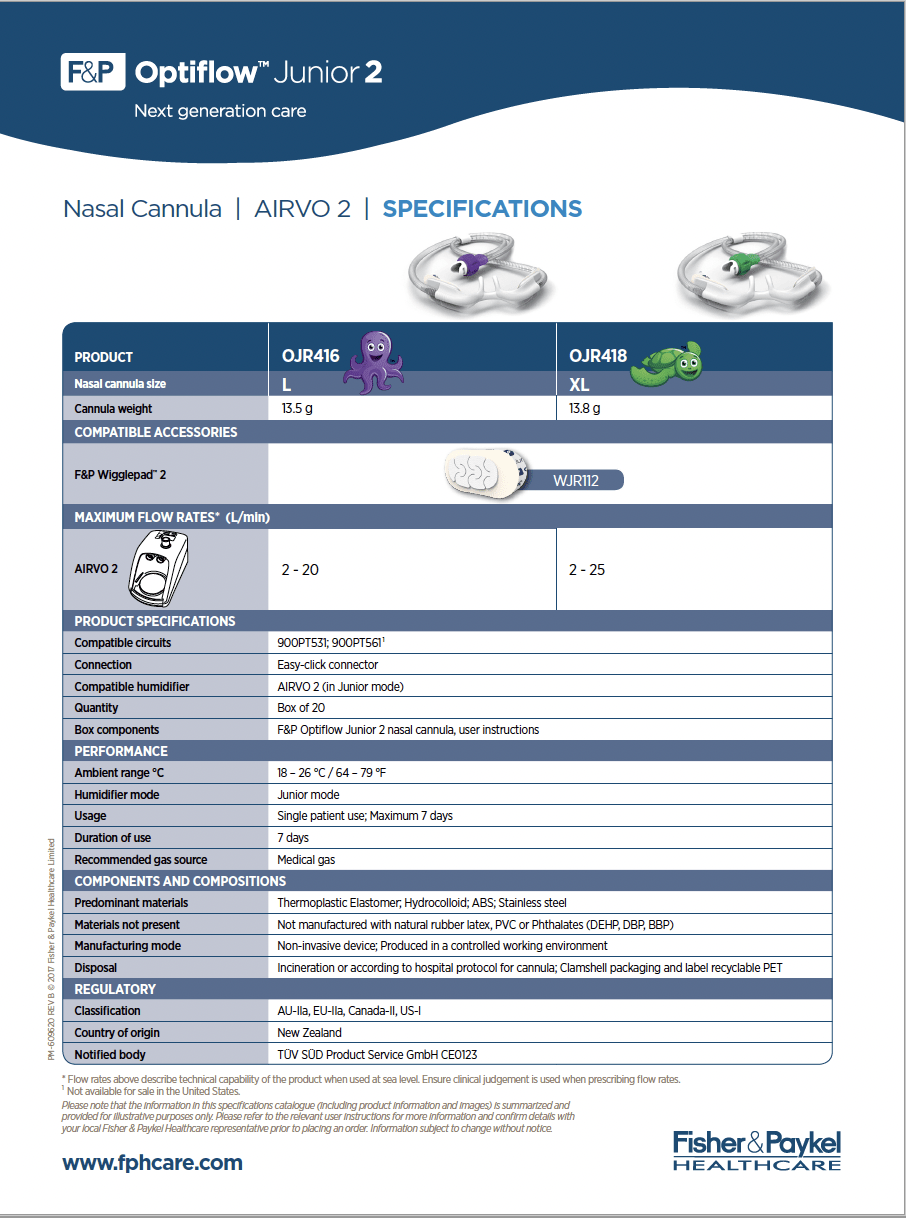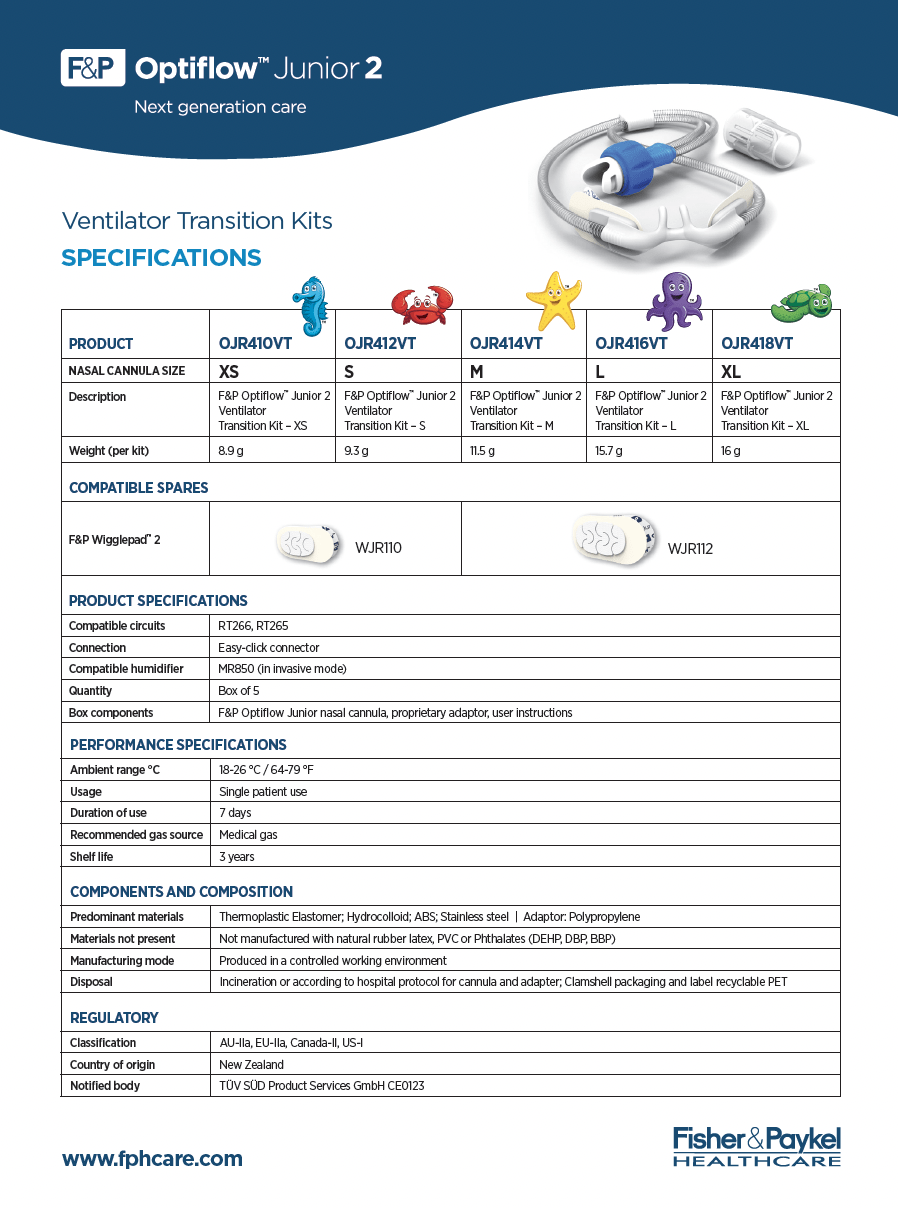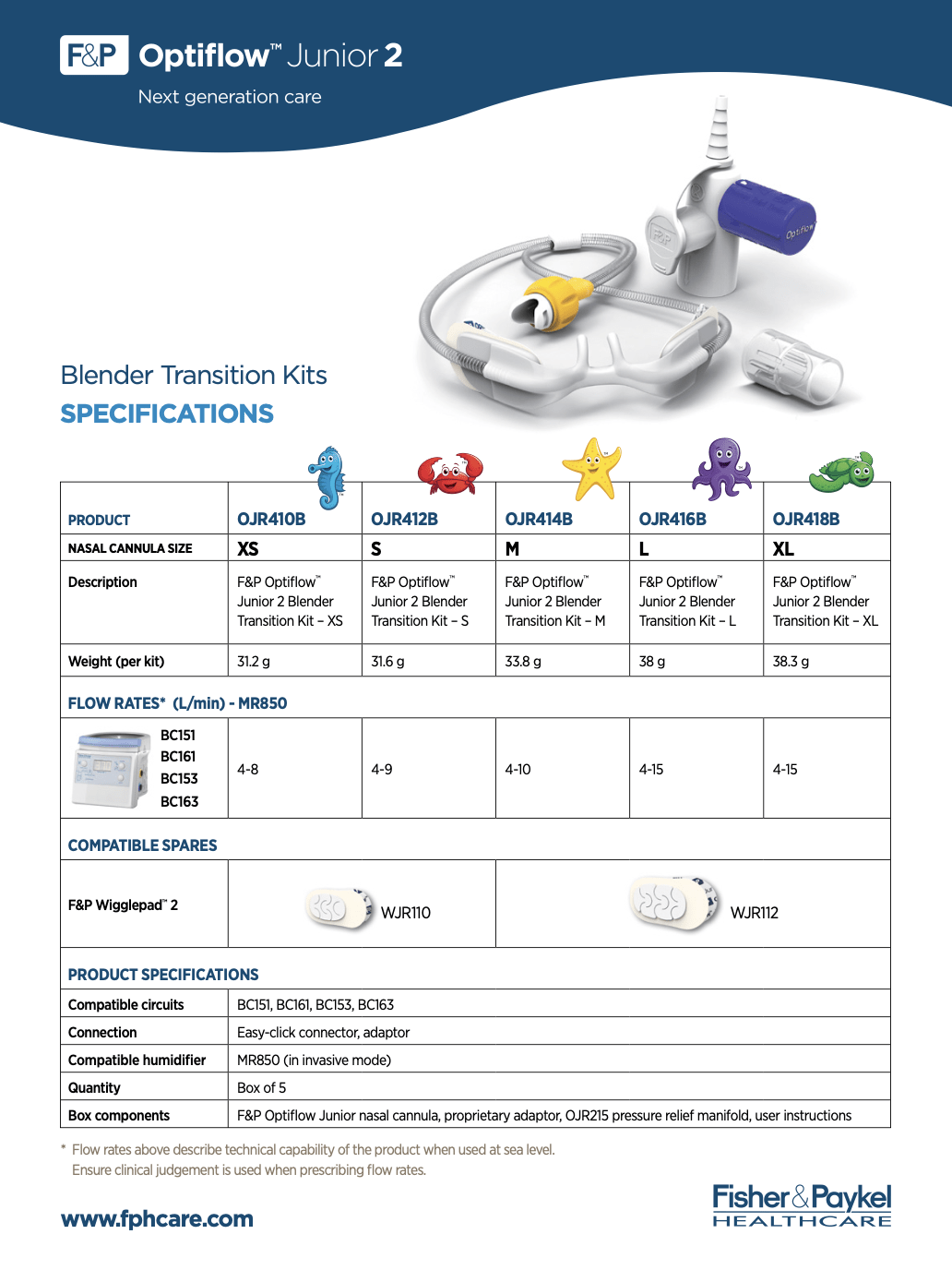Improved breathing patterns and rapid unloading of the respiratory muscles
Significant reduction in the work of breathing
Rapid improvement to respiratory distress
Reduced need for escalation of therapy in infants with bronchiolitis.
Product Description
Wash-out of the anatomical dead space in the nasopharyngeal cavity is a principal mechanism of action of NHF.[3]
Dynamic positive airway pressure
The delivery of dynamic positive airway pressure associated with NHF has been shown to reduce inspiratory effort and work of breathing compared to standard oxygen therapy.[4-6]
Improves patient comfort
NHF is gentle on the nose, which improves patient comfort, compliance, and tolerance to therapy.[7,8]
For more information, visit https://www.fphcare.com/au/hospital/infant-respiratory/
Reference:
de Klerk, A. Humidified high-flow nasal cannula: is it the new and improved CPAP? Adv. Neonatal Care 8, 98–106 (2008).
Franklin, D. et al. A randomized trial of high-flow oxygen therapy in infants with bronchiolitis. N. Engl. J. Med. 378, 1121–1131 (2018).
Dysart, K., Miller, T. L., Wolfson, M. R., & Shaffer, T. H. Research in high-flow therapy: mechanisms of action. Respir. Med. 103, 1400–5 (2009).
Mascoll-Robertson, K. K., Viscardi, R. M., & Woo, H. C. The objective use of pulse oximetry to predict respiratory support transition in preterm infants: an observational pilot study. Respir. Care 61, 416–422 (2016).
Lee, M. & Nagler, J. High-flow nasal cannula therapy beyond the perinatal period. Curr. Opin. Pediatr. 29, 291–296 (2017).
Wilkinson, D., Andersen, C., O’Donnell, C. P. F., De Paoli, A. G., & Manley, B. J. High-flow nasal cannula for respiratory support in preterm infants. Cochrane Database Syst. Rev. 2, CD006405 (2016).
Collins, C. L., Barfield, C., Horne, R. S. C., & Davis, P. G. A comparison of nasal trauma in preterm infants extubated to either heated humidified high-flow nasal cannulae or nasal continuous positive airway pressure. Eur. J. Pediatr. 173, 181–186 (2014).
Roberts, C. et al. Nasal high-flow therapy for primary respiratory support in preterm infants. N. Engl. J. Med. 375, 1142–51 (2016).
Contact our sales team
If you are interested in this product, need our help, or are experiencing technical difficulties, please do not hesitate to contact us by completing the form below.
"*" indicates required fields











